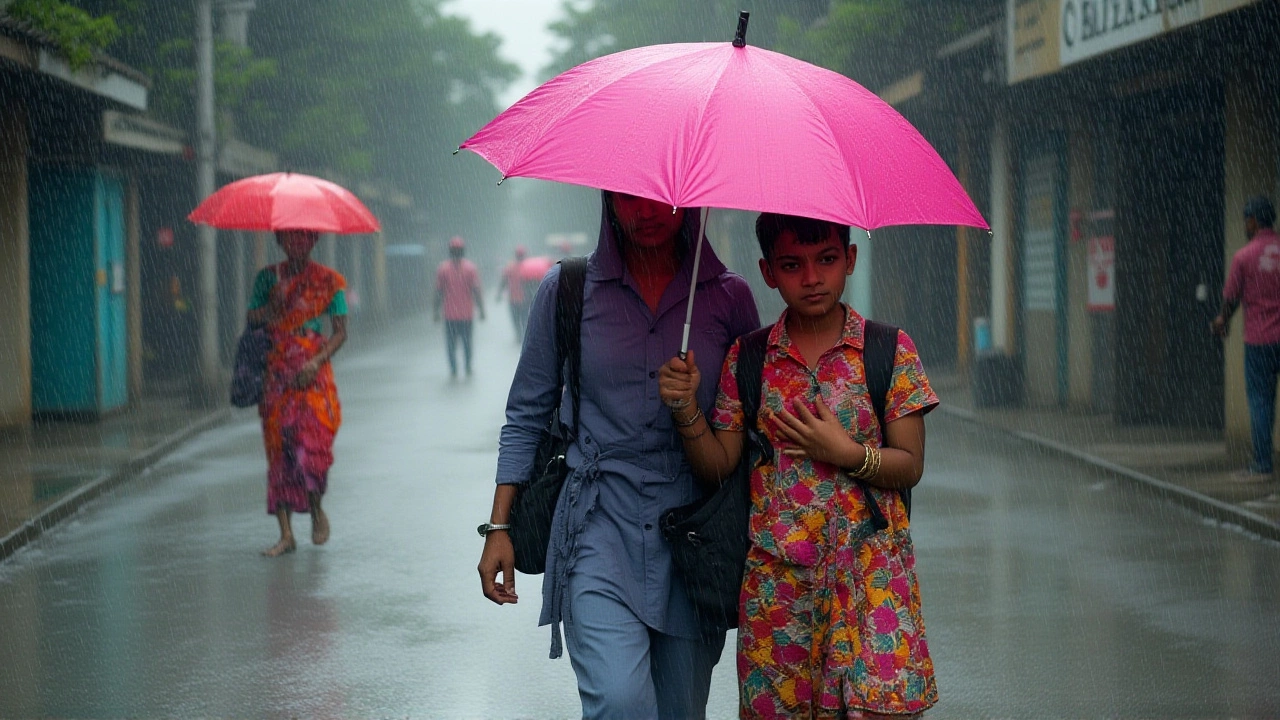Western Disturbance: Understanding India's Winter Weather Engine
When working with Western Disturbance, a fast‑moving low‑pressure system that originates over the Mediterranean and tracks eastward across the Arabian Sea and the Himalayas. Also known as mid‑latitude cyclone, it carries moisture into northern India, often triggering rain or snow during the dry winter months. Monsoon, the seasonal wind system that brings the majority of India's annual rainfall from June to September interacts with these disturbances, sometimes amplifying or dampening their impact. Likewise, a Low Pressure System, a region where atmospheric pressure is lower than its surroundings, driving air to rise and condense forms the core of a Western Disturbance, dictating its strength and path.
Why Western Disturbance Matters for You
Think of a Western Disturbance as a winter traveler that brings surprise showers to places that otherwise stay dry. Farmers in Punjab, Haryana and Uttar Pradesh rely on these sudden rain bouts to replenish groundwater before the scorching summer. In the Himalayas, the same system can dump snow that feeds rivers like the Ganga and Indus, crucial for downstream irrigation. Himalayas, the massive mountain range that acts as a barrier and channel for weather systems play a dual role: they block some moisture, causing heavy precipitation on the windward side, while creating rain shadows on the leeward side. Weather forecasters use satellite data and surface observations to track these disturbances, because early warnings can reduce flood risk in cities like Delhi and help airlines adjust flight routes.
Here's how the pieces fit together: Western Disturbance (subject) originates as a low‑pressure system (predicate) over the Mediterranean (object). The same disturbance interacts with the monsoon flow (subject‑predicate‑object) and funnels moisture through gaps in the Himalayas (subject‑predicate‑object). These semantic triples show why a single weather event can influence agriculture, water resources, and daily life across a vast region.
Modern weather forecasting, the blend of numerical models, satellite imagery and ground stations used to predict atmospheric conditions has become more accurate at spotting Western Disturbances. Models now incorporate sea surface temperature anomalies in the Mediterranean, jet‑stream dynamics, and the elevation profile of the Himalayas. As a result, the average lead time for a reliable warning has jumped from 24 hours to around 48 hours in many parts of northern India. This extra time lets authorities issue flood alerts, helps farmers plan sowing schedules, and even guides tourism operators who want to market snow‑capped peaks during the season.
While the term may sound exotic, the impact is very tangible. In December 2023, a strong Western Disturbance slammed Delhi with 70 mm of rain, breaking a three‑month dry spell and raising city‑wide water levels. In the same week, the higher reaches of the Himalayas recorded over 30 cm of fresh snow, boosting the meltwater expected for the pre‑monsoon period. Such events underscore the need to understand the disturbance’s life cycle, from birth over the Mediterranean to dissipation over the Indian subcontinent.
Looking ahead, climate change could tweak the pattern. Some studies suggest the jet stream may shift northwards, potentially reducing the frequency of Western Disturbances over India. Others argue that warmer seas could increase the moisture content, making each disturbance more intense. Either way, keeping an eye on these systems will remain a priority for anyone who depends on winter precipitation—whether you’re a farmer, a city planner, or just someone who enjoys a snowy weekend in the hills.
Below you’ll find a curated list of articles that dig deeper into each of these angles: the science behind the disturbances, their economic impact, forecasting techniques, and real‑world case studies. Dive in to see how this winter weather engine shapes the Indian landscape, and pick up practical insights you can use right away.
IMD Issues Weather Alerts as Western Disturbance Hits North India
IMD warns of heavy rain, hail and flooding across Delhi-NCR, Bihar, Uttar Pradesh and the Himalayas as a Western Disturbance peaks on Oct 6, impacting millions.
